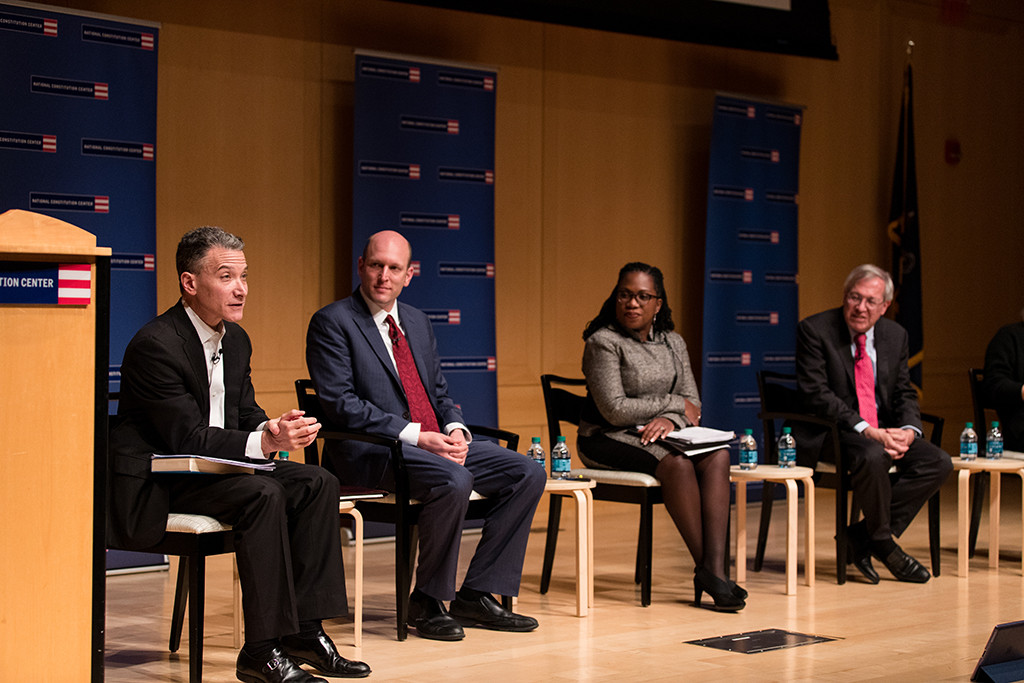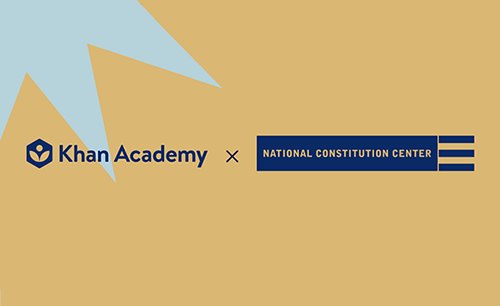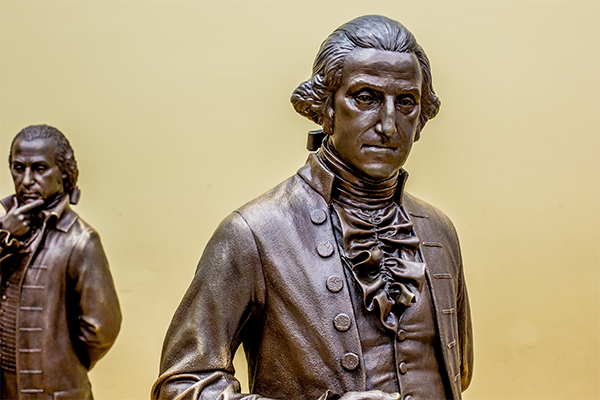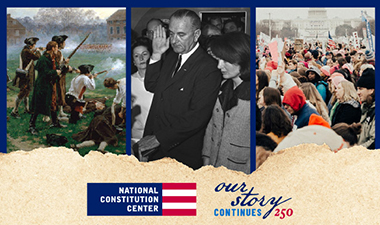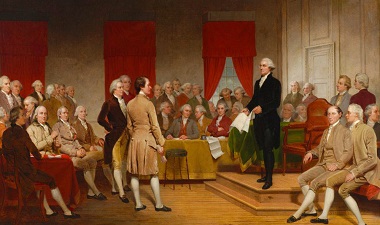At the National Constitution Center, we value civil dialogue, which empowers students to speak about constitutional and historical topics in ways that remain civil, respectful, and reflective. As you prepare to discuss these topics in your classroom, we encourage you to establish norms such as:
- Stay calm
- Listen patiently
- Listen actively
- Don’t speak twice until everybody has spoken once
You can find more support for establishing norms and civil dialogue practices in our Civil Dialogue Toolkit.
In March 2025, President Trump imposed sweeping tariffs on Mexico, Canada, and China. At the beginning of April, he imposed and then mostly reversed across-the-board tariffs on all foreign countries. The tariffs against China, which remain in place, are now being challenged in federal court.
These developments have sparked renewed debate about the scope of presidential power in matters of trade. What is the constitutional basis for imposing tariffs and how do emergency powers factor into these decisions?
Media Asset
In this Constitution Daily blog post, we explore the constitutional and historical background of tariffs in the United States, highlighting how tariff authority has shifted over time.
Discussion Questions for Students
- What is the difference between taxes and tariffs? How have tariffs impacted foreign relations throughout American history? Use the Constitution Daily blog post to assist in your assessment.
- What does the Constitution say about who has the power to levy tariffs? Use your background knowledge and the Constitution Daily blog post to support your response.
- What role did the passage of the 16th Amendment, which established a federal income tax, play in history of tariffs as a revenue source for the U.S. government?
- How have both Congress and the president wielded power to control tariffs over the course of American history, especially throughout the late 19th and early 20th centuries?
- Understanding the history of tariffs, explain the current debate about the scope of presidential power in matters of trade.
Select an Optional Student Activity for Deeper Exploration
- Draw a political cartoon that explores different perspectives on tariffs—such as consumers, business owners, workers, or government officials—using captions and symbols to express points of view.
- Work in a small group to create a brief skit about a specific moment in U.S. history involving tariffs.
- Draft a short op-ed from the perspective of a historical figure arguing for or against a tariff in their time period.
- Create a visual timeline of tariffs in U.S. history, highlighting laws, events, and turning points, using symbols or short captions to show how tariffs have impacted the economy and politics over time.
Dig Deeper on this Content with Additional Resources
Historical Foundations of Tariffs
- "A brief history of the Constitution and tariffs,” Constitution Daily (Feb. 7, 2025)
- “Talk of new tariffs opens up an old constitutional issue,” Constitution Daily (Dec. 23, 2016)
Develop Constitutional Thinking Skills with Current Events
- "Do the Trump Tariffs Violate the Constitution?,” We the People podcast (April 10, 2025)
- "Trump, Tariffs, and Trade,” We the People podcast (March 15, 2018)
- “How Congress delegates its tariffs powers to the president,” Constitution Daily (April 2, 2025)


